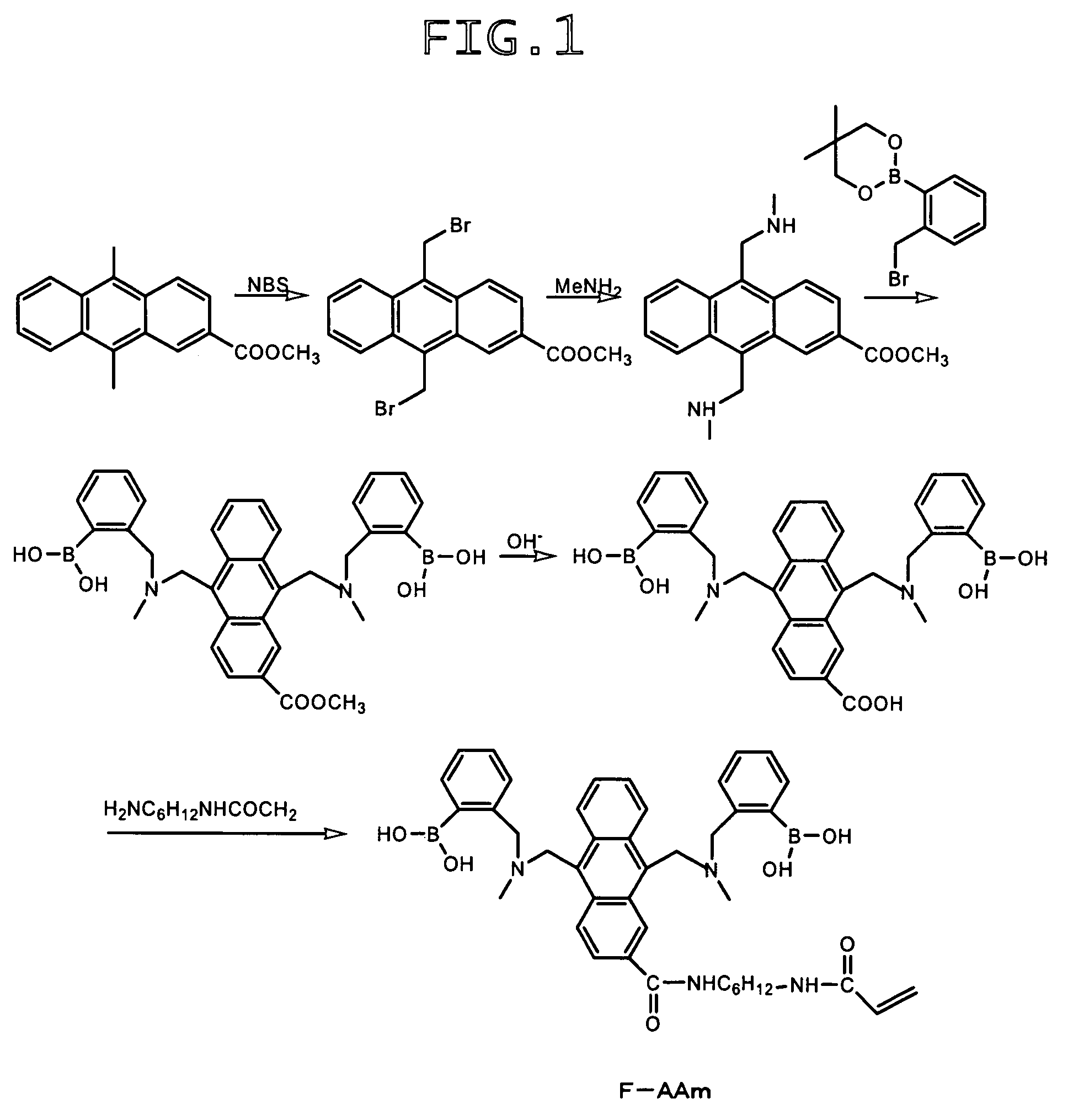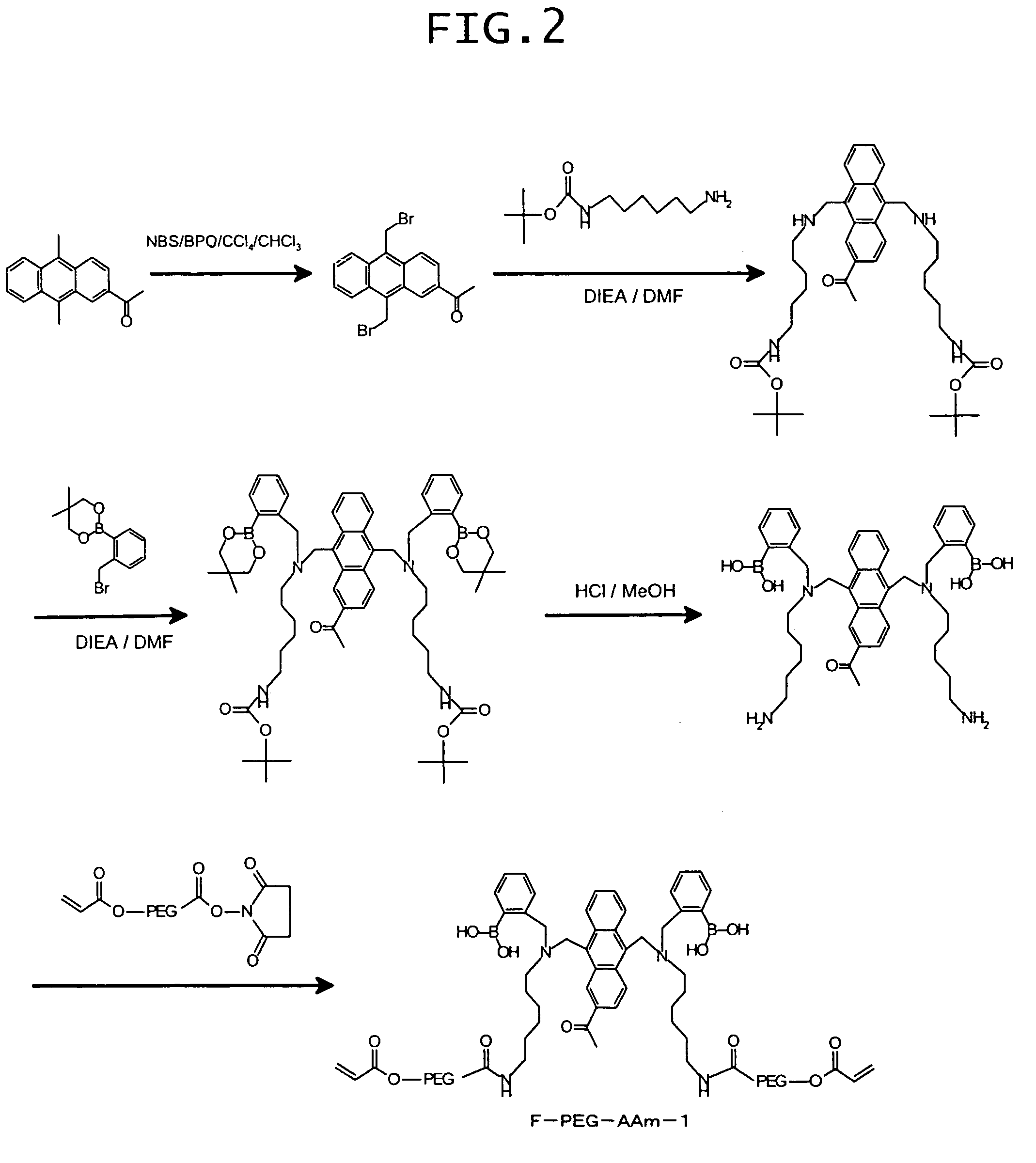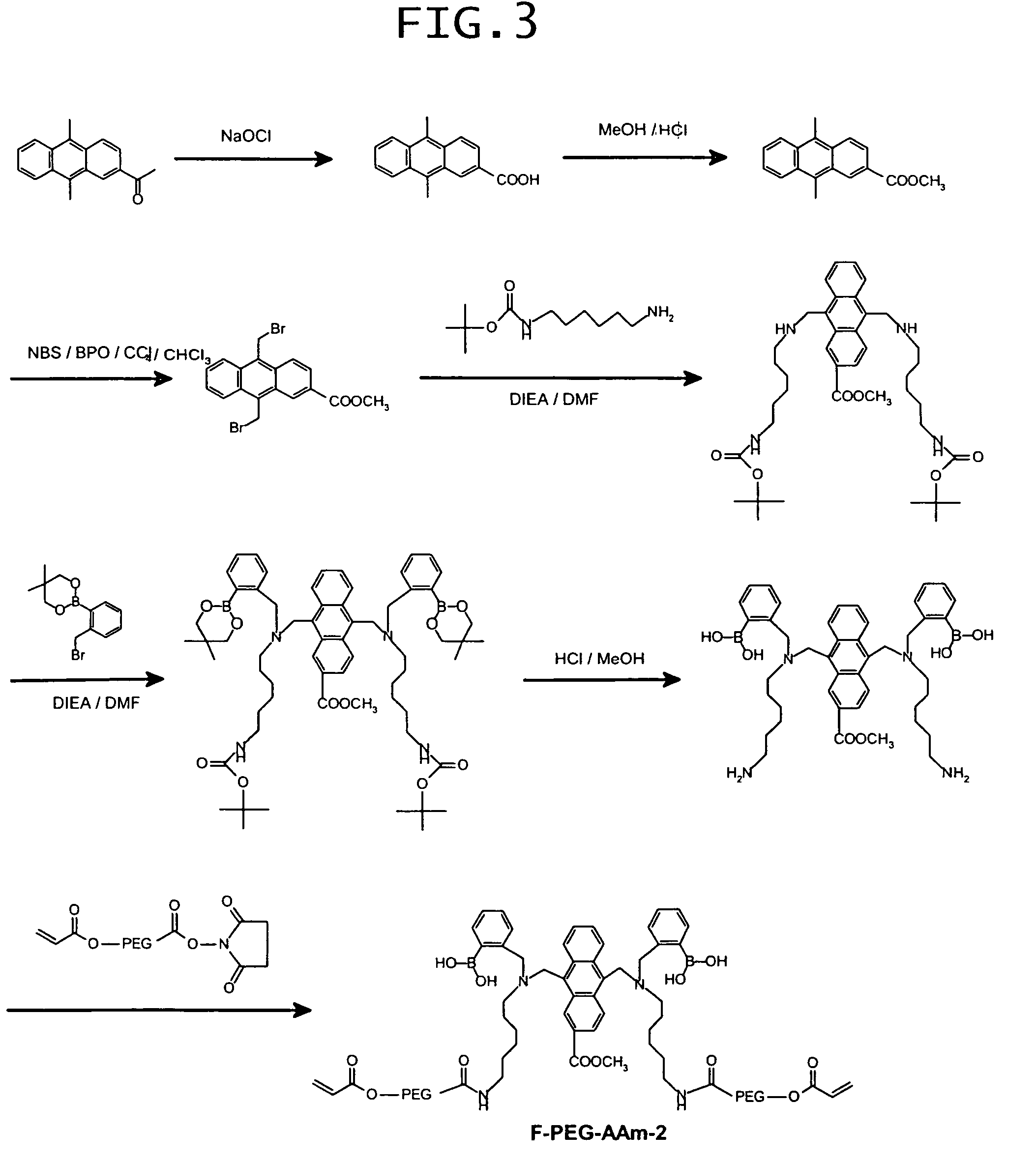Saccharide-measuring fluorescent monomer, saccharide-measuring fluorescent sensor substance, and implantable, saccharide-measuring sensor
a fluorescent sensor and saccharide technology, applied in the field of fluorescent monomers and fluorescent sensor substances, can solve the problems of difficult to ascertain the trend of blood sugar level variation through frequent measurements, difficult to attach to water-soluble saccharide, and difficult to perform more than several measurements, so as to improve the selectivity of saccharide, improve the sensitivity, and improve the sensitivity. effect of immobilization and polymerization reaction
- Summary
- Abstract
- Description
- Claims
- Application Information
AI Technical Summary
Benefits of technology
Problems solved by technology
Method used
Image
Examples
example 1
Synthesis of 9,10-bis[[N-methyl-N-(ortho-boronobenzyl)amino]methyl]anthracene-2-carboxylic acid-1-(6-acrylamido-n-hexyl)amide (hereinafter referred to as “F-AAm”)
A) Synthesis of methyl 9,10-bis(bromomethyl)anthracene-2-carboxylate
[0125]Methyl 9,10-dimethylanthracene-2-carboxylate (360 mg), N-bromosuccinimide (540 mg) and benzoyl peroxide (5 mg) were added to a mixture of chloroform (4 mL) and carbon tetrachloride (10 mL), followed by heating under reflux for 2 hours. Subsequent to the removal of the solvent, the residue was extracted with methanol to afford the target compound (430 mg).
B) Synthesis of methyl 9,10-bis(aminomethyl)anthracene-2-carboxylate
[0126]Methyl 9,10-bis(bromomethyl)anthracene-2-carboxylate (400 mg) obtained in the above procedure A) was dissolved in chloroform (60 mL), a 2 M solution of methylamine in methanol (8 mL) was added, and the resulting mixture was stirred at room temperature for 4 hours. Subsequent to the removal of the solvent, the reaction product wa...
example 2
Synthesis of 9,10-bis[[N-methyl-N-(ortho-boronobenzyl)amino]methyl]anthracene-2-carboxylic acid-(terminal acrylamido-PEG3400)amide
[0129]9,10-Bis[[N-methyl-N-(ortho-boronobenzyl)amino]methyl]anthracene-2-carboxylic acid (10 mg) obtained in the above procedure C) of Example 1, amino-PEG3400-acrylamide (product of Nektar Corp.; 50 mg) and 1-[3-(dimethylamino)propyl]-3-ethylcarbodiimide (22 mg) were dissolved in 100 mM phosphate buffer (pH 6.0; 3 mL), followed by stirring at 60° C. for 24 hours. The reaction mixture was subjected to gel filtration, and a fluorescent polymer fraction was collected to afford the target compound (36 mg).
examples 3 to 9
[0130]Prepared were a dimethylsulfoxide (hereinafter referred to as “DMSO”) solution having an F-AAm concentration of 10 wt %, a 80 wt % DMSO-water mixed solution having an acrylamide (hereinafter referred to as “AAm”) concentration of 30 wt %, a 50 wt % DMSO-water mixed solution having a sodium persulfate (hereinafter referred to as “SPS”) concentration of 3 wt %, and a DMSO solution having an N,N,N′,N′-tetramethylethylenediamine (hereinafter abbreviated as “TEMED”) concentration of 2 wt %. Using those reagent solutions, DMSO and water, reaction solutions were prepared to give their final concentrations and compositions as shown in Table 1. The thus-prepared reaction solutions were subjected to polymerization at room temperature for 2 hours to obtain copolymers of F-AAm and AAm. They will be referred to as Examples 3-9, respectively. The resultant copolymers were separately caused to precipitate from acetone, dissolved in water, and reprecipitated from acetone. This procedure was r...
PUM
 Login to View More
Login to View More Abstract
Description
Claims
Application Information
 Login to View More
Login to View More - R&D
- Intellectual Property
- Life Sciences
- Materials
- Tech Scout
- Unparalleled Data Quality
- Higher Quality Content
- 60% Fewer Hallucinations
Browse by: Latest US Patents, China's latest patents, Technical Efficacy Thesaurus, Application Domain, Technology Topic, Popular Technical Reports.
© 2025 PatSnap. All rights reserved.Legal|Privacy policy|Modern Slavery Act Transparency Statement|Sitemap|About US| Contact US: help@patsnap.com



